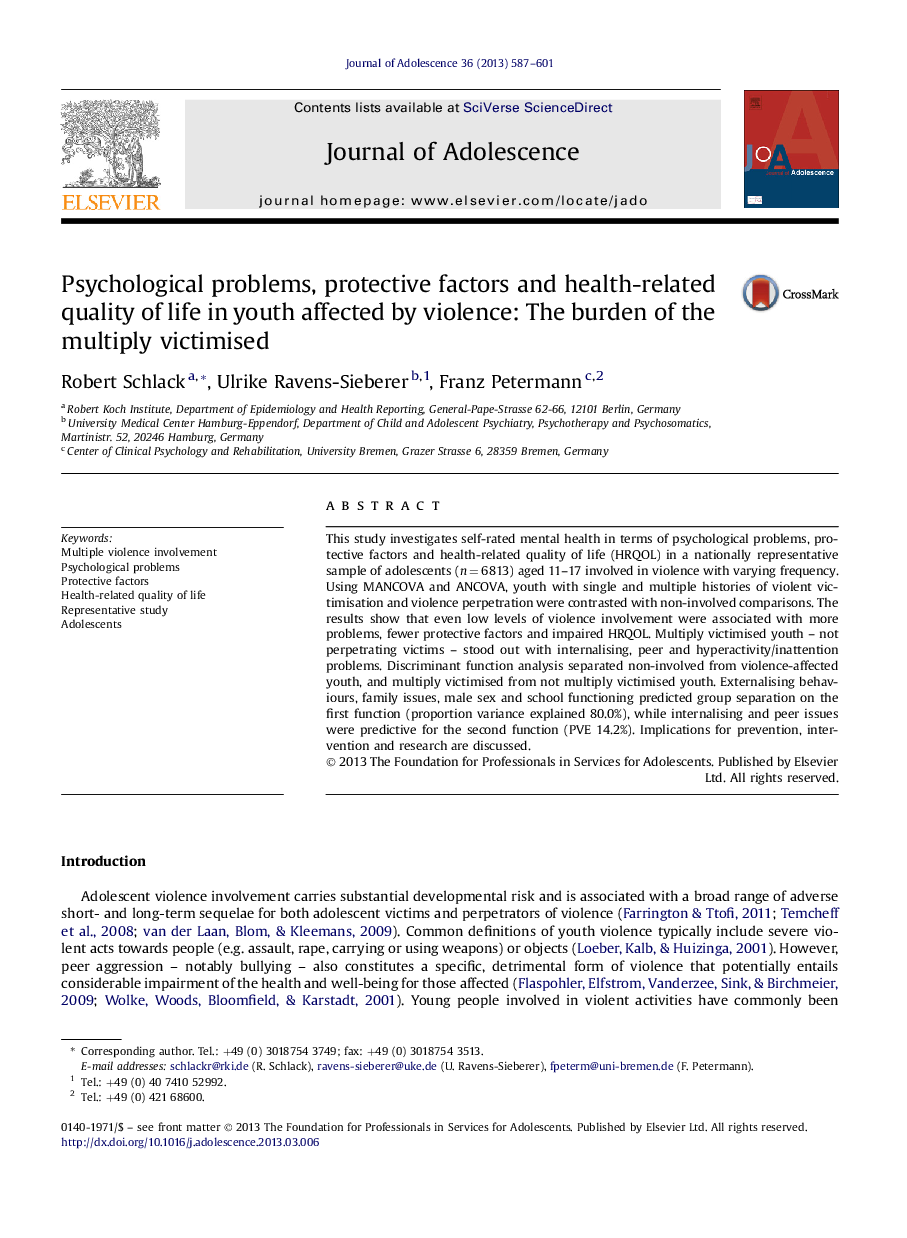| Article ID | Journal | Published Year | Pages | File Type |
|---|---|---|---|---|
| 881081 | Journal of Adolescence | 2013 | 15 Pages |
•We examine psychological problems, protective factors and HRQOL in violent youth.•We compare single and multiple violence-history youth with non-violent youth.•Multiple victims – not perpetrating victims – emerge as the most burdened group.•Perpetrating youth show decreased HRQOL, more externalising and school problems.•Multiple perpetrators stand out with the highest levels of conduct problems.
This study investigates self-rated mental health in terms of psychological problems, protective factors and health-related quality of life (HRQOL) in a nationally representative sample of adolescents (n = 6813) aged 11–17 involved in violence with varying frequency. Using MANCOVA and ANCOVA, youth with single and multiple histories of violent victimisation and violence perpetration were contrasted with non-involved comparisons. The results show that even low levels of violence involvement were associated with more problems, fewer protective factors and impaired HRQOL. Multiply victimised youth – not perpetrating victims – stood out with internalising, peer and hyperactivity/inattention problems. Discriminant function analysis separated non-involved from violence-affected youth, and multiply victimised from not multiply victimised youth. Externalising behaviours, family issues, male sex and school functioning predicted group separation on the first function (proportion variance explained 80.0%), while internalising and peer issues were predictive for the second function (PVE 14.2%). Implications for prevention, intervention and research are discussed.
